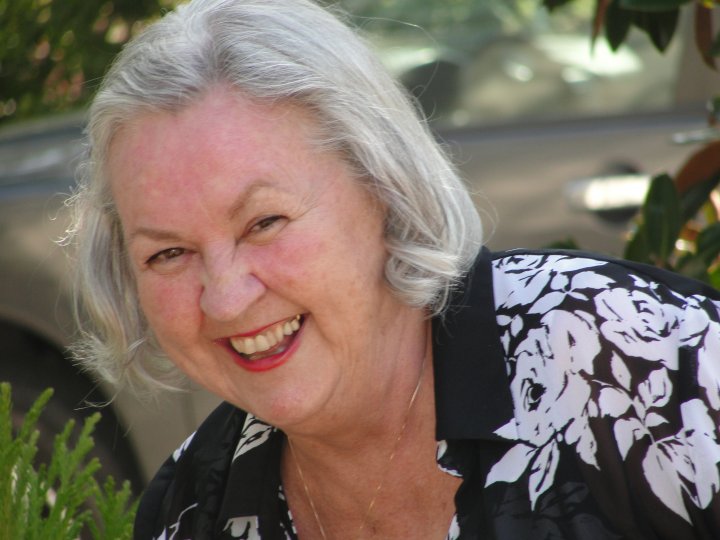
This article was written by Katie Beemer as part of our AARP Livable Communities series. Katie Beemer recently graduated from Grand Valley State University, where she completed her Masters in Public Administration. She most recently worked as a Management Fellow for the City of Wayland, MI. Connect on Twitter, LinkedIn, or Instagram. or at ktbeemer@gmail.com.
When thinking about how we can support age diversity in our communities, there are many common themes that come up, themes that encourage us to adjust zoning, economic development, etc. in a way that helps form more livable communities. Those themes are important, to be certain, but when I think about what makes a livable community, I think most strongly of my neighbor and godmother, Joyce.

Joyce is 82, and she has been living in this neighborhood her entire life. A true social butterfly, she cares diligently for every person she meets, and the adjective that is most often used to describe her is “iconic”. One of the roles that she takes on is in caring for many of the elderly members of our community, especially those who are homebound or otherwise alone. She spends much of her days visiting people, finding out what their needs are, and connecting them to people who can help. She also makes certain to include caring for the caretakers in her daily life, and she is a sounding board and support system for those people as well.
Joyce’s work in our neighborhood is deeply appreciated and valued, but not necessarily unique. In many neighborhoods, there is a Joyce, a resident who acts as a backbone of a community, who knows the needs of community members and can identify what would be most useful towards creating a more livable community. And because what makes a community livable is most often individualized, we as local government leaders cannot apply a one-size-fits-all approach. Instead, our question becomes one of identifying the specific needs of a community. In other words, how do we find our Joyce, and how can we systematically support Joyce’s work so that building a livable community is a collaborative effort. In order to build an effective livable community, we must rely on these boots on the ground to tell us what the community needs the most.
Places You Might Find a Joyce:
- Your Neighborhood Facebook Group: I know many of us working in local government have a perpetual love/hate relationship with location-based Facebook groups, but the members who are active in these groups often have a lot of valuable knowledge about community issues and dynamics, and it is a primary source of community information for many. Administrators and Moderators of these groups are very likely to be a Joyce either for their physical neighborhood or over the virtual neighborhood of the community writ large.
- Your community’s civic and community-based organizations: Whenever community members gather together to volunteer their time, whether through a civic organization like Rotary or League of Women Voters, or a more volunteer-based group, like a nonprofit. Joyce’s can often be found giving back in a more formal way, on top of their informal duties. Talking to these groups will give you insight into who the movers and shakers are, and who shows up to every event.
- Your community gathering place. This one can be harder to identify at first, but somewhere in your community, there are places where lots of people gather, generally for lots of different reasons. Your Joyce might be in those locations too. Maybe it’s a restaurant with lots of regulars. Maybe it’s the YMCA fitness classes. Maybe it’s a large faith community. The regulars in these places have a good handle on the heartbeat of the community and make it a point to be active in these spaces precisely because they know it to be a gathering space.
- Ask everyone! When you look in these spaces and regularly make yourself available to the public for questions and comments, some reoccurring names will begin to show up. But another way to find those names is to ask each person you meet with, “who are five people in the community I should get to know”?
How to Support a Joyce:
- Form a listening group. Let these key community stakeholders know that you are available and that their advice on what the needs of the community are is valuable. Provide them with an outlet to share the needs they have observed and to bounce ideas off of each other.
- Provide educational materials or contact information for services. Local government is the one institution that connects almost every other institution, and we can provide insight to the Joyce’s of our communities on what institutional supports exist. Maybe it’s the number of senior services, or maps for public transportation, or contact information for public health services, or a brochure outlining what kinds of translation services are available. The Joyce’s want to know what’s out there, because they have a strong desire to help their communities, and if we can provide them with educational materials to pass on, it will help get information into the hands of individuals. So often we wish that people understood our services better. The first step to that is to give the message to the Joyces of the community, and with their help, the message will get out.
- Recognize and honor the work of these community members. So often they do these projects without much thanks or recognition. Consider holding an annual award or recognizing these individuals in your community newsletter.
Using survey data, expertise, and other forms of decision-making is important when we consider policy changes that will build livable communities, but we must also stop and consider the interpersonal relationships that make our communities tick. In order to identify needs most effectively, we need to stop and look around for our boots on the ground neighbors, the ones who act as caretakers for the community, and ask them what they think we need. Livable communities begin with the people.
